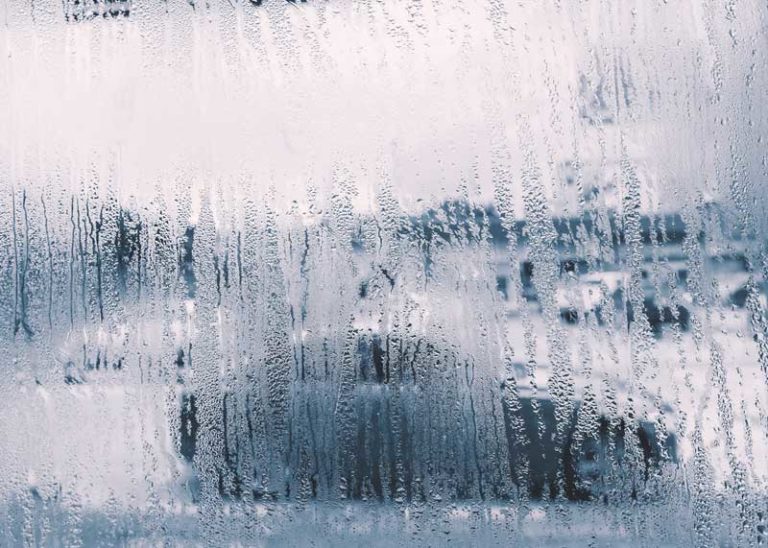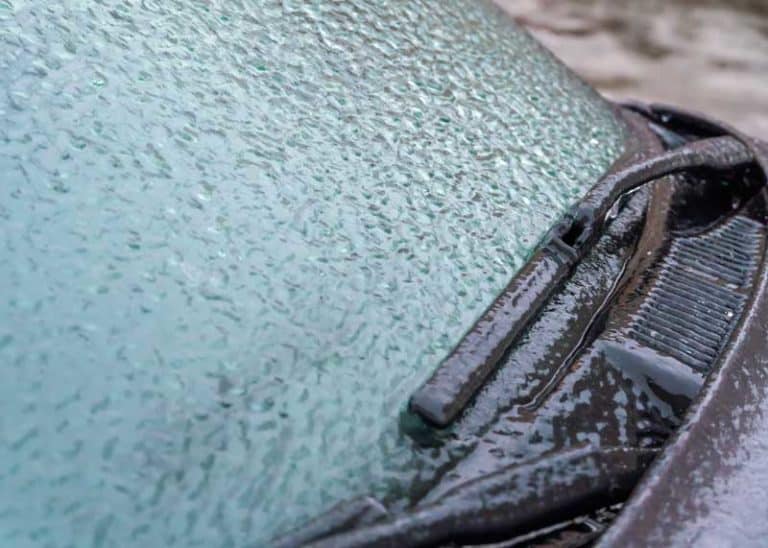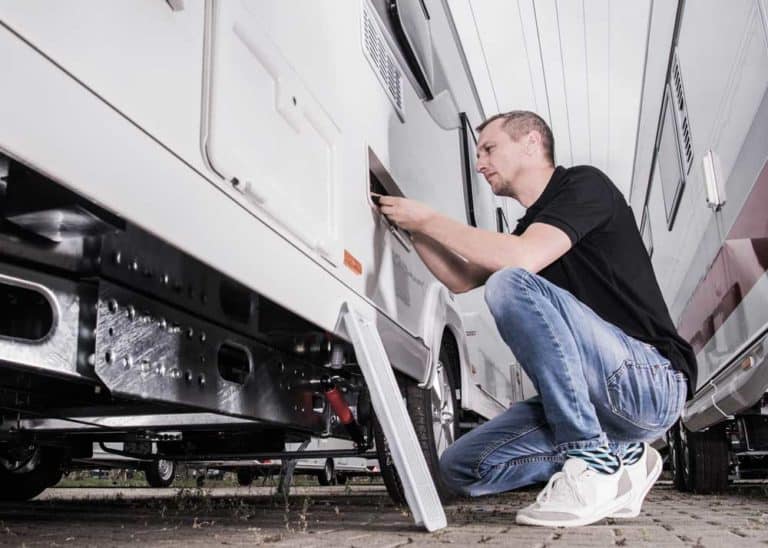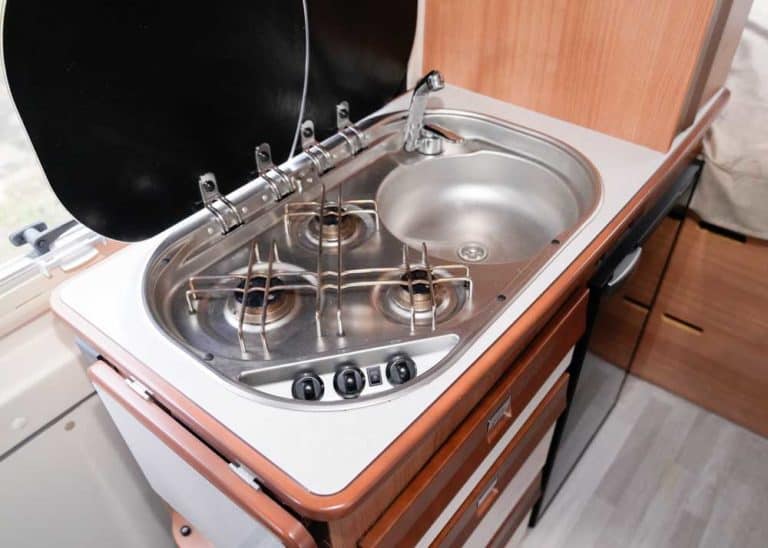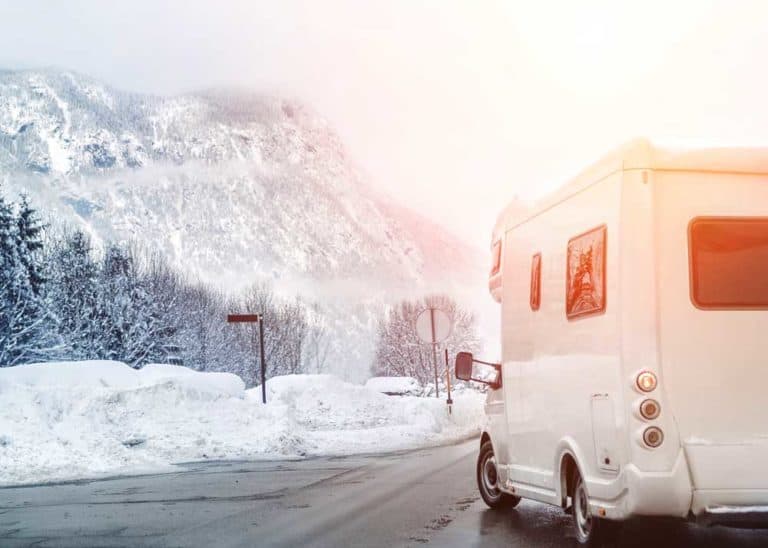Should You Cover Your RV in the Winter? 6 Pros/Cons (+3 Covers)
Perhaps you’ve seen advertisements for RV covers, and you’re wondering if they’re indispensable, especially during the winter. Do you need to use a cover? And if so, what are some good, dependable covers on the market?
You should cover your RV in the winter if you don’t have a garage large enough to store it and want to avoid storage rental fees. Keeping your RV out of the snow, ice, and wind is essential to avoiding weather-related damage and defects.
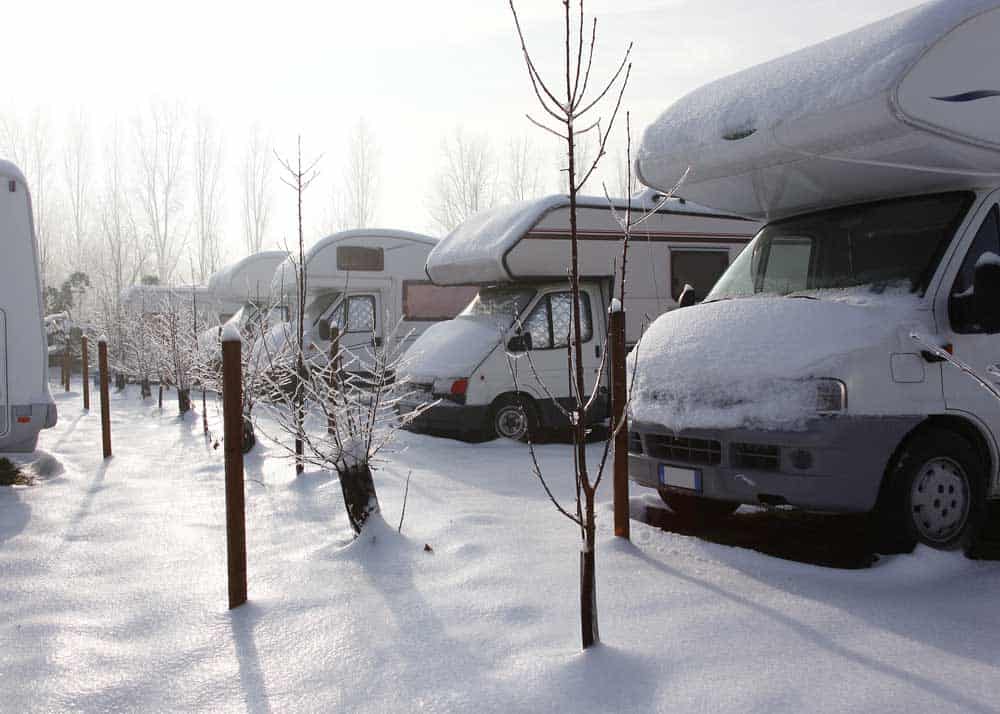
If you live in an area with harsh winters, covering your RV might be necessary.
Read on to learn more about RV covers and why it’s essential to cover your RV in the winter.
Should You Cover Your RV in the Winter?
The primary reason RV owners use covers is to keep their RV out of the weather.
Some people keep their RV covered year-round when not in use, but using a cover is especially important during the winter because ice, snow, and wind–combined with lack of use–can take a toll on your RV.
If you just bought a new RV and you want it to last, hold its value, and look well cared for, winter storage is not only essential but necessary.
You can choose to store it in your garage, rent a storage space, or keep it covered. A lot of people don’t have a garage large enough for their RV, and many others don’t want to pay the rental fees to have it stored all winter.
That’s where RV covers come in.
Do RV Covers Cause Damage?
RV covers are meant to protect your RV, but they can cause damage if they aren’t used properly.
Some steps you can take to prevent damage to your RV include:
- Make sure your RV is clean and dry before covering it. This is especially true if you plan to keep your RV covered for an extended period. If moisture is trapped beneath the cover, it may cause rust, paint damage, or other defects to the RV body. This would defeat one of the primary purposes of covering your RV in the first place.
- Make sure the cover is made of breathable materials. Most RV covers are made of polyester, polypropylene, or polyethylene. Whether or not a particular cover is breathable may depend more on the construction of the cover and the quality of the materials than the actual materials used. When selecting a cover for long-term storage, make sure you choose one that is rated for breathability.
- Make sure it’s waterproof. Generally, polyester and polyethylene covers are more waterproof than polypropylene covers, but again, construction and quality may play a more significant role than the materials involved. Choosing a waterproof cover is essential for keeping out the snow and ice during the winter.
- Make sure it’s the right size. Know the dimensions of your RV before buying your cover. If you buy a cover that’s too big, it may not fit tightly enough to keep out the elements. On the other hand, a cover that’s too small may cause scratches or other damage to the RV’s body.
- Make sure to put it on correctly. You must know beforehand how the cover is supposed to fit and how to put it on without causing damage. If the cover doesn’t sit on the RV properly, water may get in more efficiently, or the cover may rip loose during high winds, causing more significant damage.
3 Breathable RV Covers
There are lots of RV covers on the market. If you’re wondering which cover would be the best to buy, this shortlist will give you a pretty good starting point.
1. Classic Accessories Travel Trailer Cover
This cover comes in nine different sizes made to fit RVs and trailers between 15 and 40 feet. It is adjustable, giving it a custom-like fit.
Made from triple-ply polypropylene, this cover is reasonably water-repellent and works well to keep out snow and wind.
The cover has several air vents built in for breathability and to reduce wind stress. Zippered sections allow access to doors even when the cover is fully installed.
2. ADCO RV Cover
This cover fits RVs and trailers from 15 to 37 feet long, depending on the size you order.
The top is made from triple-layer SFS Aqua Shed material, making it nearly waterproof and an excellent option for wet climates. The sides are made of triple-layer polypropylene.
This cover includes tire covers, side vents, and door zippers for convenience and extra protection. Buckles at the front, rear, and bottom allow you to customize the fit and give this cover a shrink-wrapped appearance.
3. King Bird RV Cover
This waterproof cover comes in six sizes to fit RVs between 18 and 33 feet.
It is made of extra durable 4-ply fabric that offers maximum protection against rain, snow, UV damage, and other environmental factors.
In addition to included tire covers, zipper doors, and air vents, this cover comes with reflective yellow stripes, which make it more visible in the dark.
Don’t forget to seal your RV roof before winter. Many RV owners use Flex Seal Liquid to waterproof their RV roofs. Here’s more about how long Flex Seal lasts.
And here’s how to remove Flex Seal from 6 different surfaces.
6 Pros and Cons of Using an RV Cover
If you’re still not sure whether you should cover your RV for the winter, let’s look at some of the pros and cons of using a cover.
4 Pros of an RV Cover
- Protection from snow, ice, and water. The primary purpose of RV covers is to keep out the elements. If you live in an area that receives a lot of snow, ice, heavy winter rains, and wind, a cover may keep your RV in better condition through the long months of inactivity.
- Protection from UV radiation. UV radiation can cause your RV to fade and rubber roofs or window seals to crack. In most cases, UV radiation isn’t much of an issue during the winter due to lower sun angles and increased cloud cover; however, in southern states that receive more sunshine and milder winters, keeping your RV covered can be a good idea any time of the year.
- Lower storage costs. If you don’t have a garage large enough to store your RV during winter, you may have to decide between renting a storage area for the winter or buying a cover. Buying a cover is a much cheaper option.
- Covers keep your RV in good shape. With a cover to keep your RV safe from wind, snow, dirt, UV damage, and general wear and tear, you’ll be able to maintain your RV more cheaply and efficiently. Using a cover during the winter will help your RV stay in better shape for longer, thus helping it to maintain its value.
2 Cons of Using an RV Cover
- Covers can be expensive. The covers reviewed above all range between $200 and $300, before taxes and shipping costs. While this may certainly cost less than renting a storage space for the winter, it can seem like a relatively high one-time cost for some RV owners.
- They’re a pain to put on and take off. RV covers are enormous, heavy, and bulky. If you’ve never used one before, it may take some trial and error to get it on correctly. You may also need to have someone help you with it. Taking the cover off and folding it up is an equally challenging process.
Thanks to Survival Tech Shop for some of the above pros and cons.
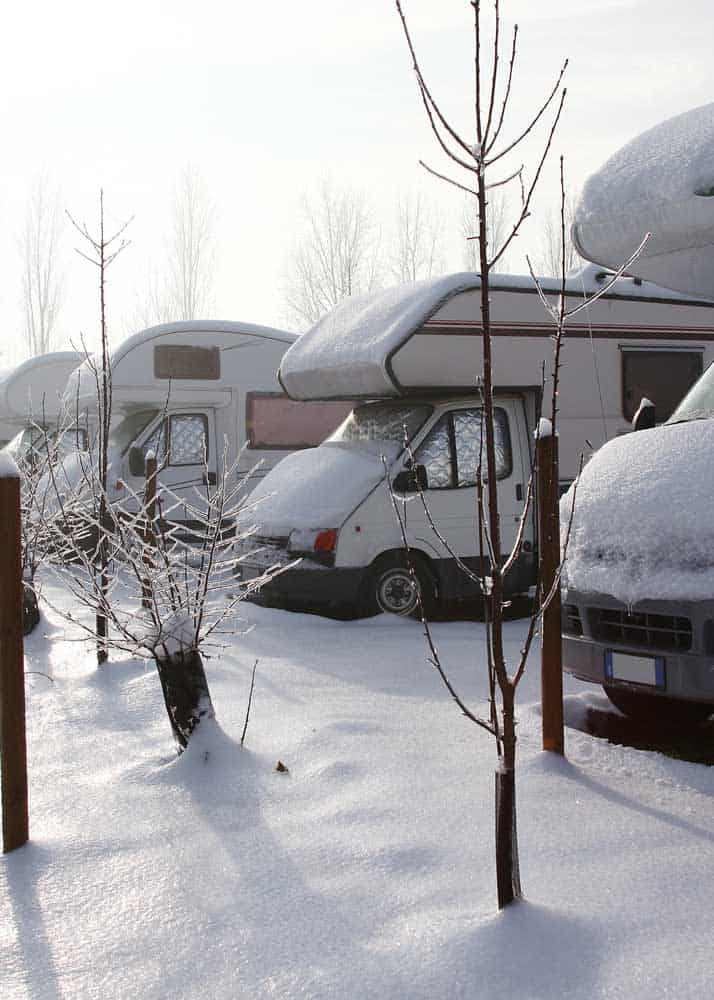
More reading: 14 Winter RV Camping Tips
Your Turn
And there you have it. Whether you choose to cover your RV in the winter is really up to you, but it’s a great way to keep your RV out of the weather and ready for your next camping trip once the weather warms up.
Have a tip to share? I would love to hear how you care for your RV over the winter.




